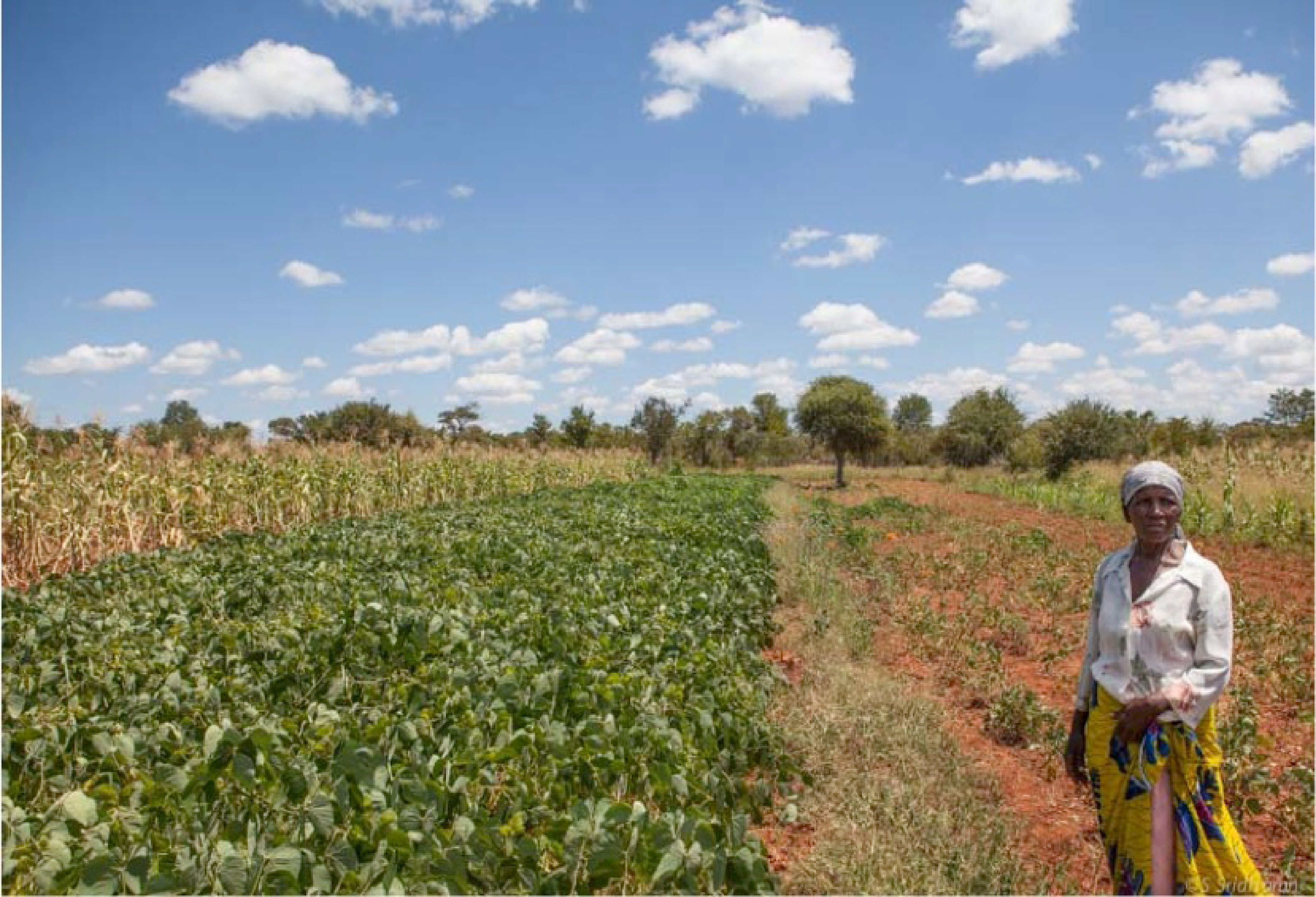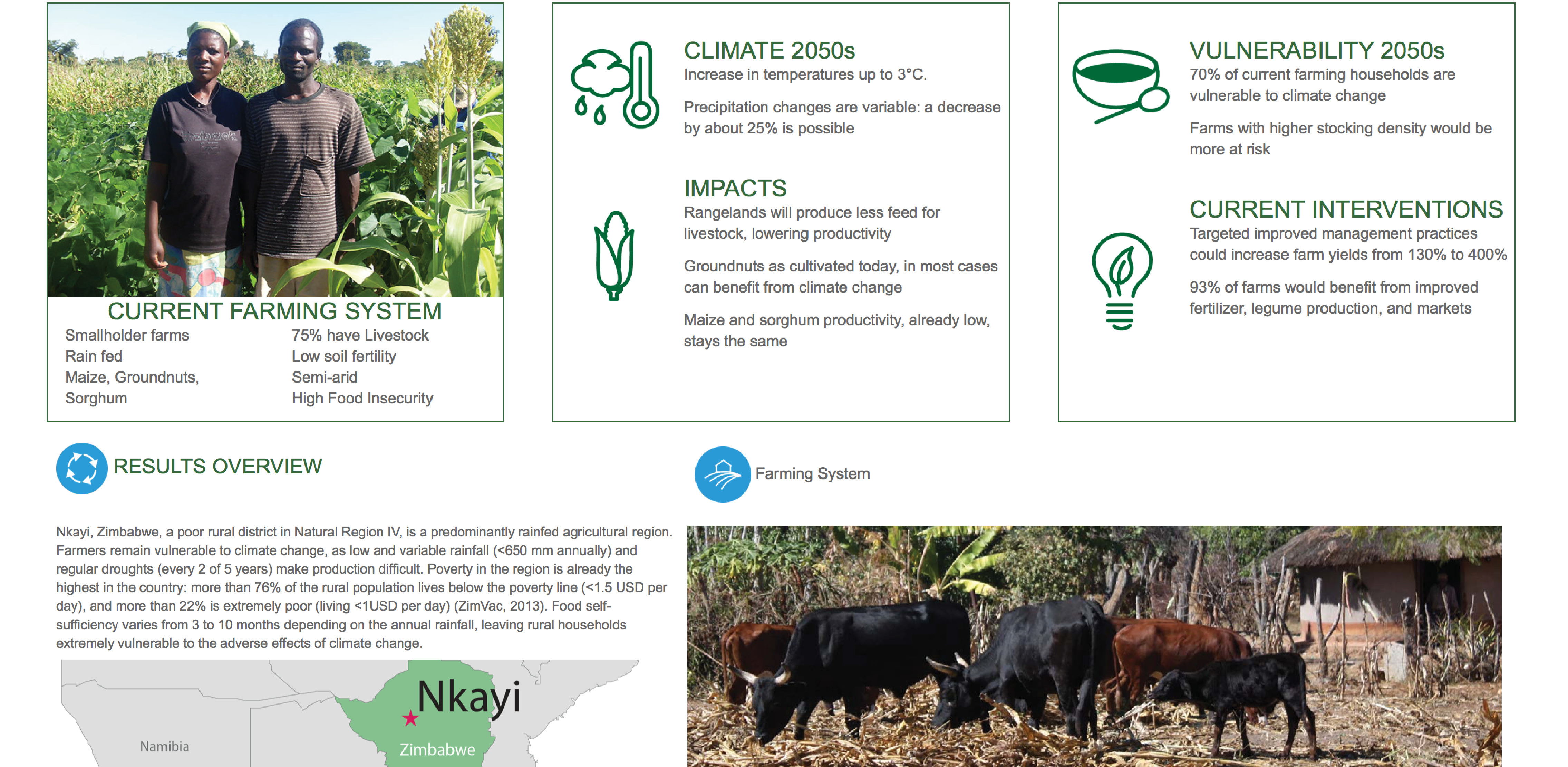South Eastern Africa
Overview of Initiative
Large parts of Malawi, Mozambique, and Zimbabwe’s climate are semi-arid. As a result, the region is reliant on wet seasons for the majority of its annual precipitation. More extreme weather, as well as inconsistent precipitation patterns, has made this region more susceptible to climate implications in the coming future. These implications are significant; the majority of the population is rural and reliant on agriculture as a means to livelihood.
The project’s primary purpose is to re-design smallholder crop-livestock systems in semi-arid South Eastern Africa to address poverty and enhance resilience to climate change. Phase 2 (2015-2017) built pathways for sustainable futures by advancing and building on initiatives from Phase 1, which identified agricultural intensification as insufficient to improving smallholder livelihoods. During Phase 2, the team explored adaptation packages tailored to farm types, a change from the predominant blanket recommendation ideology.
Three primary objectives comprised Phase 2 initiatives: engage stakeholders, assess impacts of climate change on farming system components, and develop and explore crop-livestock reconfiguration pathways. These objectives were achieved by improving communication and capacity development through multi-stakeholder dialogue, through advancing crop and livestock components, as well as further analyzing diversity of farming systems.
Stakeholder engagement and outreach was a major priority to Phase 2 work. The South Eastern Africa team achieved this by mapping stakeholder networks at the sub-national and national level to understand how and where work could serve existing institutional structures. Pathways were constructed through stakeholder networks, ensuring stakeholder engagement at all stages of the research and modeling process. These findings allowed for the development of adaptation packages specified for particular the contexts, needs, and interests of different farm types. The stakeholder engagement not only improved pathway development, but also helped improve capacity building.


Impacts Explorer – Nkayi, Zimbabwe
Smallholder rain-fed farms growing maize, sorghum and peanut
View the Regional Summary for Nkayi, Zimbabwe here.
View the Spatial Dashboard for Nkayi, Zimbabwe here.


South Eastern Africa Team members
Sabine Hoffman-Kee Tui: Lead PI; Economic modeling; Stakeholder Engagement
Ana Lidia Gungulo: Co-PI; Economic Modeling
Patricia Masikati: Co-PI; Crop modeling; Crop-Livestock Linkages
Gevious Sisto: Co-PI; Economic Modeling
Olivier Crespo: Climate Change Modeling
Jairos Ruinda: Crop Modeling
Arthur Gama: Economic Modeling
Katrien Descheemaeker: AgMIP Resource Person
Trinity Senda: Livestock Modeling; Rangeland Modeling
Thembikosi Baleni: Student
Naomi Jone: Student, Economic Modeling
Buhle Francis: Stakeholder Liaison
Max Wengawenga: Economic Modeling; Stakeholder Engagement
Ian Tumeo: Student, Economic Modeling
Swathi Sridharan: Impacts Explorer
Mink Zijlstra: Livestock Modeling Support
Albert Chirima: GIS Analysis
Research Summary
NKAYI, CENTRAL WEST ZIMBABWE
Crops: Maize, sorghum, groundnuts, mucuna
Models: DSSAT, APSIM, LivSim
Farm System: Maize x cattle dominated, maize/ sorghum/ groundnuts/ mucuna x cattle
Economic Strata: No cattle, small cattle herd, large cattle herd
Possible Adaptation: Increased area of small grains – stable yields; Increased area of forage legume – low cost feed; Long duration maize – drought tolerant; Cereal-legume rotations; Manure application – low risk soil fertility
MZIMBA, NORTHERN MALAWI
Crops: Maize, groudnuts, mucuna
Models: DSSAT, APSIM, LivSim
Farm System: Maize dominated x cattle/goats, maize/ legumes x stall fed cattle production, goats
Economic Strata: No cattle, with cattle
Possible Adaptation: Increased area of forage legume – low cost feed; Long duration maize, groundnuts – drought tolerance; Cereal-legume rotation – low risk soil fertility; Manure on maize, groundnuts – low risk soil fertility
MTCHINJI, CENTRAL MALAWI
Crops: Maize, MP groudnuts
Models: DSSAT and APSIM
Farm System: Maize and groundnut dominated farming
Economic Strata: Farms with cattle, farms without cattle
Possible Adaptation: Increased area of forage legume – low cost feed; Long duration maize, groundnuts – drought tolerance; Cereal-legume rotation – low risk soil fertility; Manure on maize, groundnuts – low risk soil fertility
SUSSUNDENGA, CENTRAL MOZAMBIQUE
Crops: Maize, cowpeas, sorghum
Models: DSSAT and APSIM
Farm System: Extensive to improved management of maize, sorghum, cowpea
Economic Strata: Farms with cattle, farms without cattle
Possible Adaptation: Increased area of small grains – stable yields; Increased area of forage legume – low cost feed; Long duration maize, legume, sorghum – drought tolerant; Cereal-legume rotation – low risk soil fertility; Manure application – low risk soil fertility
KEY PARTICIPATING INSTITUTIONS
The International Crop Research Institute for Semi-Arid Tropics (ICRISAT)– Zimbabwe
University of Cape Town
The World AgroForestry Center (ICRAF) – Zambia
University of Zimbabwe
Wageningen University
Matopos Research Institute
National University of Science and Technology/Institute of Development Studies – Zimbabwe
Lilongwe University of Agriculture and Natural Resources
Instituto de Investigacao Agraria de Mozambique
